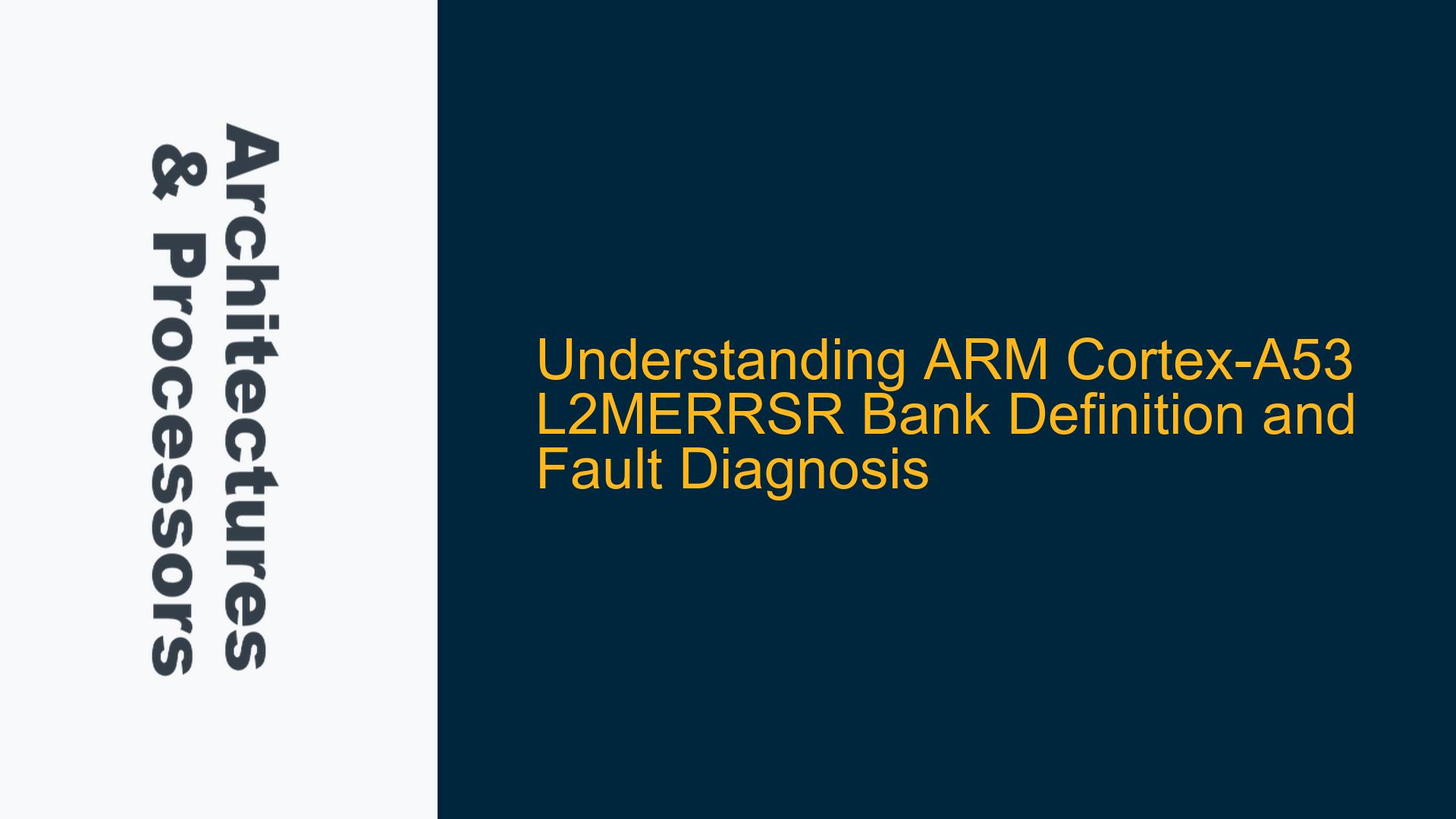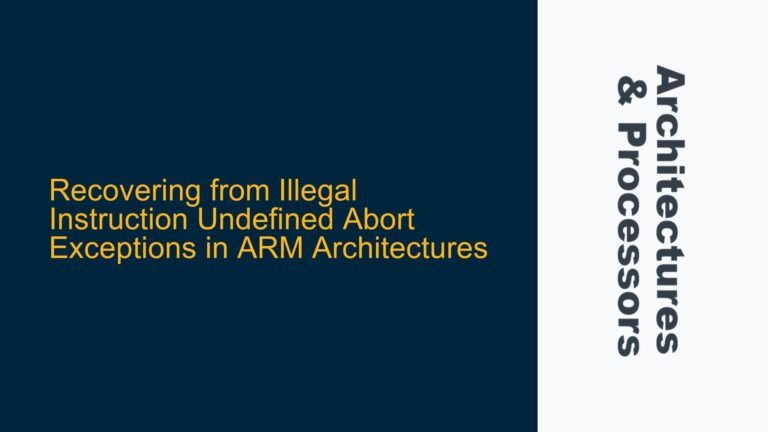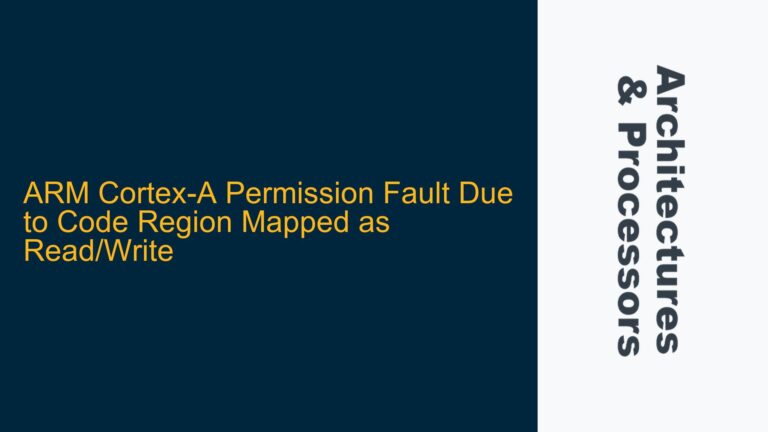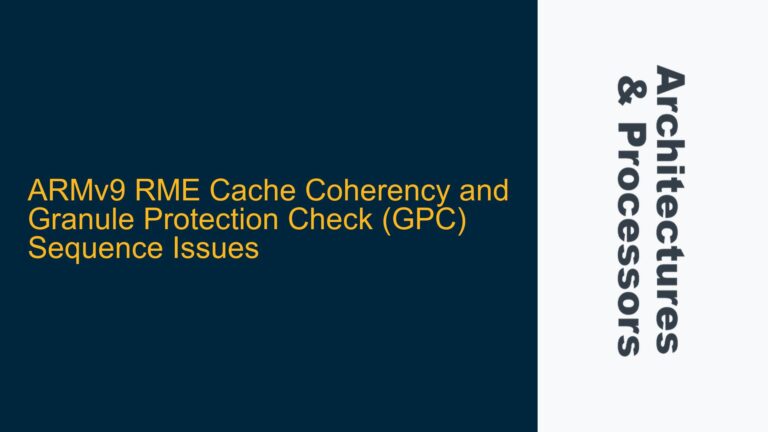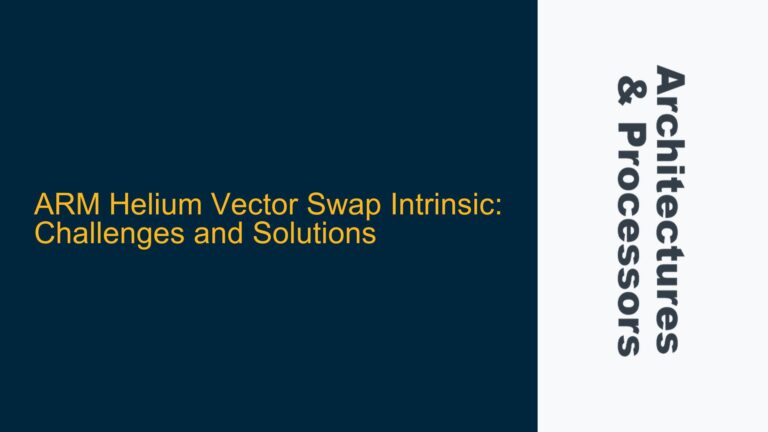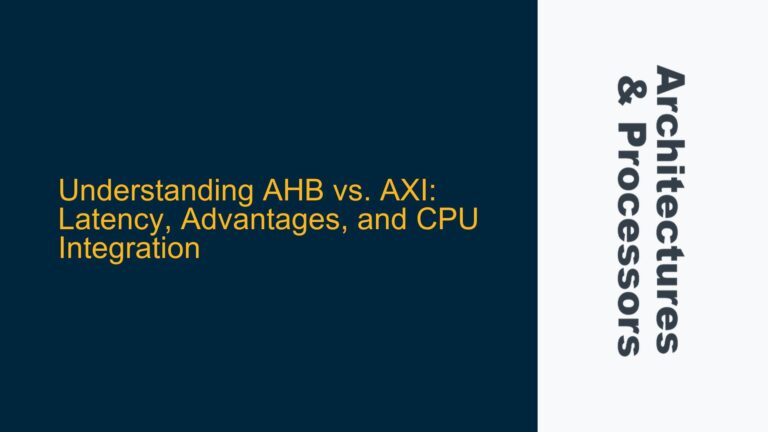ARM Cortex-A53 L2MERRSR_EL1 Error Parsing and Cache Organization
The ARM Cortex-A53 processor incorporates a shared L2 cache, which is a critical component for system performance and reliability. The L2 Memory Error Reporting Status Register (L2MERRSR_EL1) is a key register used for diagnosing faults in the L2 cache. In the context of the Zynq UltraScale+ (ZU+) chip, the L2MERRSR_EL1 register reports errors that can be parsed to understand the nature of the fault. The specific error reported in this scenario is "Valid = 1, RAMID = 11, CPUID/Way = 3, Addr = 3C0F".
The L2 cache in the Cortex-A53 is organized into 16 ways, with each way being 64KB in size, resulting in a total L2 cache size of 1MB. Each way maps to a specific region of the main memory. For instance, Way 0 maps to the first 64KB of DDR memory, Way 1 maps to the next 64KB, and so on. This mapping is crucial for understanding how cache lines are allocated and how errors in the cache correspond to specific memory locations.
The L2MERRSR_EL1 register provides detailed information about the error, including the RAMID, CPUID/Way, and the address of the faulty cache line. The RAMID field identifies the specific RAM bank within the L2 cache where the error occurred. The CPUID/Way field indicates the cache way and the CPU core that encountered the error. The address field provides the offset within the cache line where the error was detected.
In this case, the error indicates that the fault is in RAMID 11, Way 3, at address 3C0F. The RAMID field is particularly important because it identifies the specific bank within the L2 cache that is faulty. The Cortex-A53 L2 cache is divided into multiple banks, typically 8 banks (Bank 0-7), each of which is responsible for storing a portion of the cache data. Understanding how these banks are organized and how they map to the physical memory is essential for diagnosing and resolving the fault.
RAMID and Bank Mapping in Cortex-A53 L2 Cache
The RAMID field in the L2MERRSR_EL1 register is used to identify the specific bank within the L2 cache where the error occurred. The Cortex-A53 L2 cache is divided into multiple banks, typically 8 banks (Bank 0-7), each of which is responsible for storing a portion of the cache data. The RAMID value corresponds to one of these banks. In this case, the RAMID value is 11, which suggests that the error is in Bank 11. However, since the Cortex-A53 L2 cache typically has only 8 banks, this raises questions about how the RAMID value is interpreted.
The RAMID value is likely a combination of the bank number and other attributes, such as the cache set or the specific RAM array within the bank. The Cortex-A53 Technical Reference Manual (TRM) provides detailed information on how the RAMID is defined and how it maps to the physical banks in the L2 cache. According to the TRM, the RAMID field is a 4-bit value, which allows for up to 16 different RAMIDs. However, only 8 of these RAMIDs are used to identify the banks in the L2 cache. The remaining RAMIDs may be used for other purposes, such as identifying specific RAM arrays or cache sets within a bank.
In the context of the ZU+ chip, the L2 cache is organized into 16 ways, with each way being 64KB in size. Each way is further divided into multiple banks, typically 8 banks. Each bank is responsible for storing a portion of the cache data, and the RAMID value is used to identify the specific bank where the error occurred. The RAMID value of 11 suggests that the error is in Bank 3 (since 11 in binary is 1011, and the lower 3 bits indicate the bank number). This interpretation aligns with the typical organization of the Cortex-A53 L2 cache, where the lower bits of the RAMID value are used to identify the bank.
The address field in the L2MERRSR_EL1 register provides the offset within the cache line where the error was detected. In this case, the address is 3C0F, which corresponds to a specific location within the cache line. The cache line size in the Cortex-A53 is 64 bytes, so the address 3C0F indicates that the error is at offset 0x3C0F within the cache line. This information is useful for diagnosing the fault, as it provides a specific location within the cache line where the error occurred.
Diagnosing and Resolving L2 Cache Faults in Zynq UltraScale+
Diagnosing and resolving L2 cache faults in the Zynq UltraScale+ (ZU+) chip requires a systematic approach that involves understanding the cache organization, interpreting the error information provided by the L2MERRSR_EL1 register, and taking appropriate corrective actions. The first step in diagnosing the fault is to parse the error information from the L2MERRSR_EL1 register. In this case, the error is "Valid = 1, RAMID = 11, CPUID/Way = 3, Addr = 3C0F".
The Valid bit indicates that the error is valid and should be investigated. The RAMID value of 11 suggests that the error is in Bank 3 of the L2 cache. The CPUID/Way value of 3 indicates that the error is in Way 3 of the cache. The address 3C0F provides the specific location within the cache line where the error occurred.
To diagnose the fault, it is important to understand how the cache is organized and how the RAMID, CPUID/Way, and address fields map to the physical memory. The Cortex-A53 L2 cache is organized into 16 ways, with each way being 64KB in size. Each way is further divided into 8 banks, with each bank responsible for storing a portion of the cache data. The RAMID value is used to identify the specific bank where the error occurred. In this case, the RAMID value of 11 suggests that the error is in Bank 3.
Once the specific bank and way where the error occurred have been identified, the next step is to determine the cause of the fault. Possible causes of L2 cache faults include manufacturing defects, voltage fluctuations, and timing issues. In the case of the ZU+ chip, the fault could be due to a manufacturing defect in the L2 cache, or it could be caused by voltage fluctuations or timing issues during operation.
To resolve the fault, it may be necessary to perform a series of tests to isolate the cause of the error. This could involve running diagnostic software to test the L2 cache, adjusting the voltage and timing settings, or replacing the faulty chip. If the fault is due to a manufacturing defect, it may be necessary to replace the chip. If the fault is caused by voltage fluctuations or timing issues, adjusting the voltage and timing settings may resolve the issue.
In addition to diagnosing and resolving the fault, it is important to implement measures to prevent similar faults from occurring in the future. This could involve improving the manufacturing process, implementing better voltage regulation, or optimizing the timing settings. By taking a systematic approach to diagnosing and resolving L2 cache faults, it is possible to improve the reliability and performance of the Zynq UltraScale+ chip.
Conclusion
Understanding the organization of the ARM Cortex-A53 L2 cache and the information provided by the L2MERRSR_EL1 register is essential for diagnosing and resolving faults in the Zynq UltraScale+ chip. The RAMID, CPUID/Way, and address fields in the L2MERRSR_EL1 register provide detailed information about the location and nature of the fault. By systematically analyzing this information and taking appropriate corrective actions, it is possible to diagnose and resolve L2 cache faults, improving the reliability and performance of the system.
